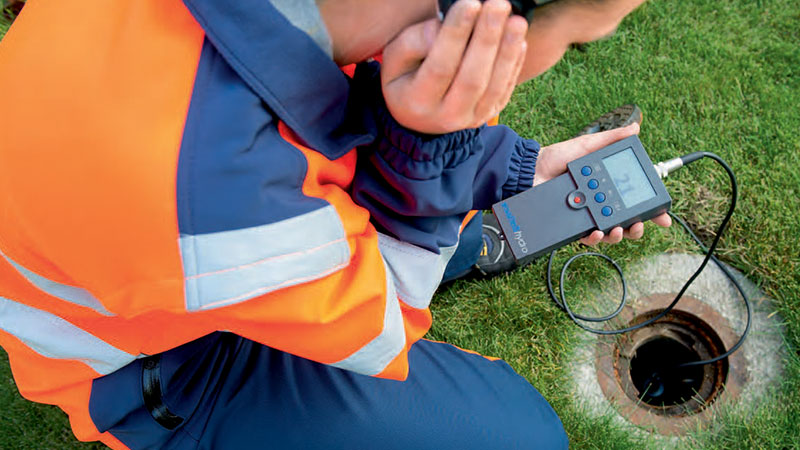Discover Reliable Water Leak Detection Solutions for Accurate and Quick Results
Discover Reliable Water Leak Detection Solutions for Accurate and Quick Results
Blog Article
Innovative Solutions for Early Discovery of Water Leaks in Buildings and Infrastructure
From cutting-edge leak detection modern technologies to the deployment of IoT sensors for real-time monitoring, the landscape of leak avoidance is advancing rapidly. Automated water flow evaluation systems are improving how leaks are determined and attended to, paving the means for a proactive technique to water leak detection.
Advanced Leakage Discovery Technologies
Advanced leak detection modern technologies, furnished with advanced sensing units and algorithms, play an essential duty in promptly recognizing and pinpointing water leaks in numerous settings. Electromagnetic sensors can recognize adjustments in electro-magnetic areas triggered by water, providing yet another layer of leak discovery capacity.

IoT Sensors for Real-Time Tracking
In the world of modern water leakage detection, the integration of IoT sensing units for real-time tracking stands for an essential innovation in enhancing aggressive leakage discovery capacities. These sensors offer continuous tracking of water systems, supplying real-time information on water circulation rates, stress variations, and temperature modifications. By leveraging IoT modern technology, these sensing units can detect even the smallest anomalies in water usage patterns, making it possible for early identification of prospective leaks before they intensify right into major concerns.
IoT sensing units send data to a central system, where innovative algorithms evaluate the information and produce informs or alerts when irregularities are found. This real-time monitoring capability permits homeowner or center managers to quickly address leaks, lessening water damages, decreasing repair costs, and conserving water sources.
In addition, IoT sensors can be integrated with building administration systems, permitting automatic responses to spotted leaks, such as turning off water shutoffs or triggering pumps to reduce the effect of leakages. Overall, the execution of IoT sensors for real-time surveillance significantly improves the performance and performance of water leak discovery in buildings and facilities.
Machine Learning Algorithms for Leak Prediction

One secret advantage of using machine learning for leak forecast is its Home Page ability to continually discover and improve its accuracy in time. As even more information is collected and fed right into the formula, it can fine-tune its predictions and adapt to altering problems, eventually enhancing the dependability of leakage discovery systems.
Furthermore, maker understanding algorithms can aid in recognizing subtle indications of leaks that may go undetected by typical monitoring techniques. water leak detection. By examining complicated data embed in real-time, these algorithms can give very early cautions and signals, enabling prompt treatment and precautionary upkeep to mitigate potential water damages and linked costs
Making Use Of Thermal Imaging for Leak Detection
Thermal imaging technology supplies an appealing approach for identifying water leaks in numerous systems and facilities. By making use of infrared radiation and temperature level variations, thermal imaging cameras can identify concealed leakages that are not quickly visible to the naked eye.
One of the vital benefits of thermal imaging for leakage discovery is its non-intrusive nature. On the whole, the use of thermal imaging technology improves the performance and accuracy of water leakage discovery, making it a valuable device for preserving the stability of structures and frameworks.
Automated Water Circulation Analysis Systems
Just how can automatic water flow evaluation systems transform the detection and administration of leakages in different systems and facilities? Automated water circulation analysis systems use a proactive method to leakage detection by continuously monitoring water flow prices and patterns. By developing baseline data, these systems can quickly recognize deviations that may indicate a leakage, allowing prompt treatment to stop extensive damages.
These systems utilize sophisticated algorithms to analyze real-time information and offer prompt notifies when abnormalities are found, enabling swift action to be taken. Furthermore, automated water flow evaluation systems can be incorporated with building administration systems or IoT systems, boosting overall efficiency and allowing remote surveillance capabilities.
In addition, the information collected by these systems can be used for predictive maintenance purposes, helping to identify potential powerlessness in the facilities before leaks take place. Overall, the execution of computerized water circulation evaluation systems can dramatically boost leakage discovery and administration methods, eventually resulting in cost savings, lowered water waste, and enhanced sustainability in buildings and infrastructure.

Conclusion
In see this page final thought, the combination of advanced leak detection modern technologies, IoT sensing units, artificial intelligence formulas, thermal imaging, and computerized water flow analysis systems provides ingenious options for early detection of water leaks in Our site structures and infrastructure. These technologies enable real-time monitoring, prediction of leakages, and efficient detection techniques to avoid water damage and waste. Applying these remedies can assist in keeping the integrity and sustainability of water supply in different setups.
Report this page